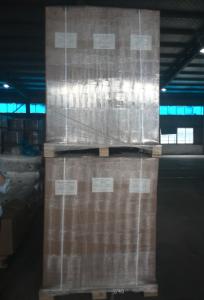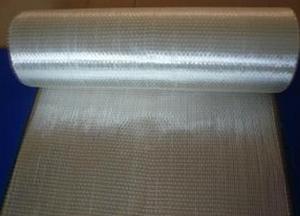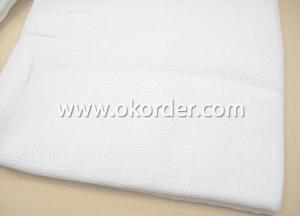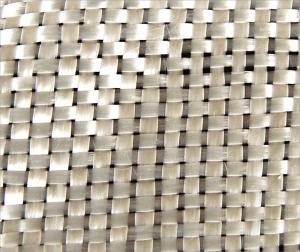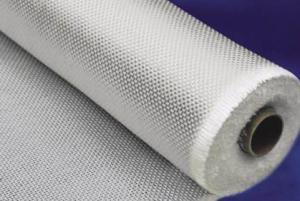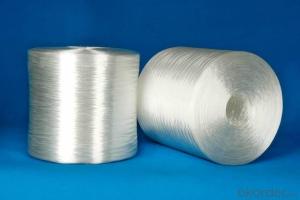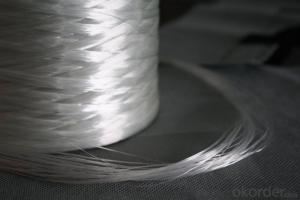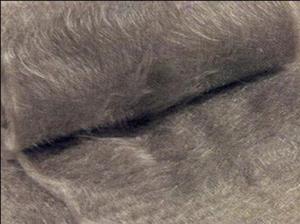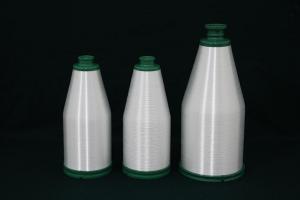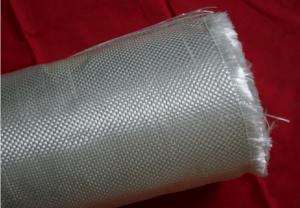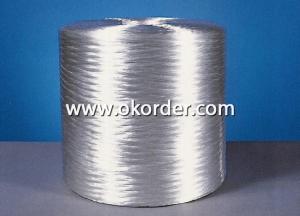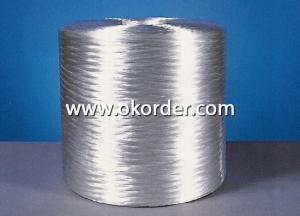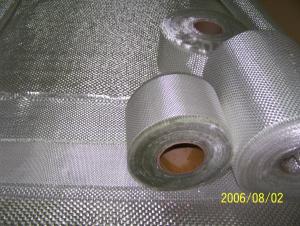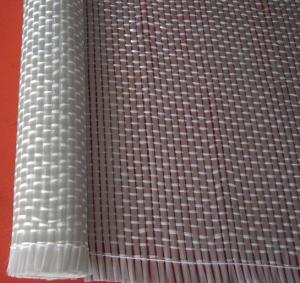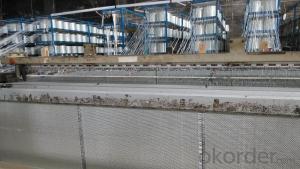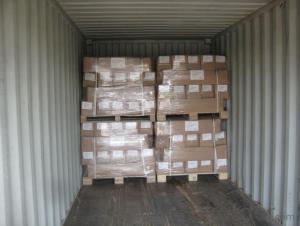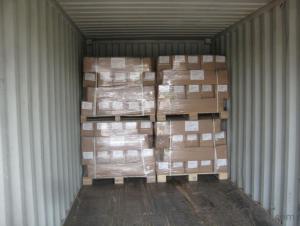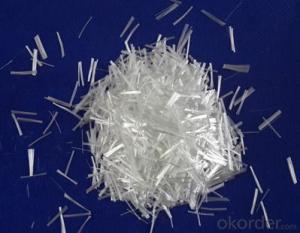E-Glass Fiber Woven Roving for hand lay-up-1000mm
- Loading Port:
- Qingdao
- Payment Terms:
- TT or L/C
- Min Order Qty:
- 5000 kg
- Supply Capability:
- 500000 kg/month
OKorder Service Pledge
OKorder Financial Service
You Might Also Like
Product Properties of E-Glass Fiber Woven Roving
Warp and weft rovings aligned in a parallel and flat manner, resulting in uniform tension
Densely aligned fibers, resulting in high dimensional stability and making handing easy
Good moldability, fast and complete wet in resins, resulting in high productivity
Good transparency and high strength of composite products
Glass fiber woven rovings are bidirectional fabric made by interweaving direct rovings and compatible with many resin like UP, vinyl ester, epoxy and phenolic resin.
It is a high-performance reinforcement widely used in hand lay-up and robot processes for the production of boats, vessels, plane and automotive parts, furniture and sports facilities
Package of E-Glass Fiber Woven Roving
Woven roving are wounded onto a paper tube which has an inside diameter of 89mm, and the roll has a diameter of 260mm. The roll is wrapped up with plastic film, and then packed in a cardboard box or wrapped up with kraft paper. The rolls are to be horizontally placed. For transporation the rolls can be loaded into a container directly or on pallets.
Storage of E-Glass Fiber Woven Roving
Unless otherwise specified, fiberglass products should be stored in a dry, cool and rain-proof area. It is recommended that the room temperature and humidity should be always maintained at 15℃-35℃ and 35%-65% respectively.
Product specification
| Product code | Mass(g/m²) | Fabric density(end/cm) | Width (mm) | Roll weight(kg) | Compatible resins | |
| warp | weft | |||||
| EWR400 | 400 | 3.6 | 3.2 | 1500 | 40 | UP/EP/VE |
| EWR400 | 400 | 3.6 | 3.2 | 1500 | 50 | UP/EP/VE |
| EWR600 | 600 | 2.6 | 2.4 | 1500 | 40 | UP/EP/VE |
| EWR600 | 600 | 2.6 | 2.4 | 1500 | 50 | UP/EP/VE |
| EWR800 | 800 | 1.8 | 1.5 | 1500 | 40 | UP/EP/VE |
| EWR800 | 800 | 1.8 | 1.5 | 1500 | 50 | UP/EP/VE |
IMAGES:
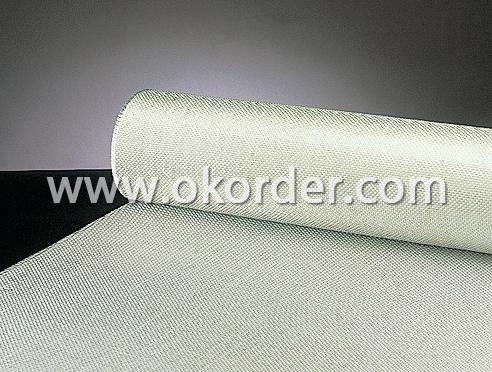

FAQ:
1. Why Choose us?
CNBM is a stated own company, provide the guarantee for the best quality, best service and safety business.
2. How will we guarantee the quality?
a, ISO 9001-2008 quality control system;
b, Strict and regular quality control in production;
c, Inspeciation when loading into container before shippment;
d, Sample stock for one year for quality tracing and record.
3. What is your MOQ?
Our MOQ is one pallet.
4. Can you provide sample?
Yes, samples are in stock. we can offer free sample for you.
5. Payment terms?
We can accept L/C, T/T etc.
6. Do you offer OEM service?
Yes, we can print customers’ logo on the packaging;
And the size and specification can be produced and design according to your demand.
7. What is the Production Lead Time?
1 *40HQ each day.
- Q:What is glass fiber for?
- Glass fiber is a kind of excellent inorganic non-metallic materials with a great variety. It has many advantages such as good insulation, strong heat resistance, good corrosion resistance and high mechanical strength, but its disadvantage is brittle and poor wear resistance. It uses glass ball or waste glass as raw materials and is formed by high temperature melting, wire drawing, winding and weaving. The filament diameter is from several microns to over twenty micron which is equal to 1/20-1/5 of a hair with each bundle is formed by hundreds or even thousands of monofilament. Glass fiber is often used as the reinforced material in the composite material, electrical insulating materials and heat or thermal insulation materials. It is widely used in national economy field such as circuit board. Twistless roving is composed of parallel raw silk or parallel filaments. According to glass composition, twistless roving glass can be divided into good or better resin permeability. alkali free glass twistless roving and medium alkali glass twistless roving The diameter of glass fiber used in the production of glass roving is from 12 to 23 μm . The number of twistless roving is from 150 to 9600 (tex). Twistless roving can be directly used for producing some composite material with high content of glass?fiber. (6) In the preform process, twistless roving is widely used; Twistless roving has a good property of degradation and each bundle fibers is formed by hundreds or even thousands of monofilament. Twistless roving used for pultrusion can be formed by combined multiple strands or twistless roving. The diameter of glass fiber used in the production of glass roving is from 12 to 23 μm .
- Q:What is glass fibre reinforced plastic? What do Glass fiber reinforced plastic used for?
- it is commonly known as glass fiber reinforced plastic: Also reduce plastic pollution of not being degradation. 1. 2: Not only can save energy consumption of metal. Glass fiber reinforced plastic products can be used as an alternative to the metal and plastic. It is an ideal material for glass fiber reinforced plastics, as its scientific name is glass fiber reinforced plastics.
- Q:What type of cement is used in the common GRC component?
- Fiber: You can selectively add some of the volcanic ash active material: High efficiency water reducing agent can be selectively added to the water: The basic composition of GRC material is cement: when the product contains steel reinforcement or steel embedded parts of.5%, the low alkalinity sulphoaluminate cement. The acrylate copolymer emulsion, antirust agent and other additives, fiber and water and other additives to improve the performance of the materials later. European and American countries require the use of GRC in the glass fiber zirconia content should be not less than 16, antifreeze, early strength agent, retarder, white Portland cement. . Additive is conducive to improve the integrated performance of GRC products, including the alkali resistant glass fiber twistless roving. Polymer. Other materials: Usually the added polymer is emulsion C, and alkali resistant glass fiber mesh. The fibre in the GRC material must be of alkali resistant glass fiber: Usually the cement used in GRC material are mainly rapid hardening sulphoaluminate cement and Portland cement. Cement. More details to be continued. GRC material is made of sand, alkali resistant glass fiber chopped yarn. It is durability and shall not use calcium chloride additives. . , for example, strength, anti permeability,
- Q:What kind of knife can used to cut glass wool cloth?
- The mix proportion of epoxy resin and mortar is that 6101epoxy resin: ethylenediamine: cement: sand is equal to 100:15:8:200:500. 1 base dispose, 1)a vertical fissure is formed along the crack gouge, vertical cracks cut into 2 surface treatment, Siyou cloth with its surface sticking epoxy base fluid and glass silk cloth is used for surface treatment ( in which oil used is epoxy liquid, and cloth is glass?silk cloth). 1) process of glass silk cloth. Glass cloth generally usually made by alkali-free glass fiber is twistless roving woven cloth. Wetting agent are added in the production process of glass silk cloth. As wetting agent contains grease and wax which will impact the combination of epoxy base fluid and glass silk cloth, it is necessary to remove oil and wax on glass silk cloth in order to make epoxy base fluid immerse in glass fiber, improving the bonding effect. The method for removing wax and oil is to place glass silk cloth in boiling water containing with soda for an hour, then you should blanching it with clean water. the way to judge whether there is oil and wax on glass silk cloth is to touch and feel it. If you feel like it is not greasy, it is clean. After removing oil and wax, glass silk cloth losts its original white and brightness appearance and its weight also reduces correspondingly. 2) paste process. When pasting, you should brush epoxy resin base fluid evenly on the paste face, then you should brush the second layer with the same way.
- Q:What are the causes and methods of glass fiber surface treatment?
- Transfer process: the incorporation of surface treating agents into resins (mainly for wrapping and moulding).
- Q:What are the differences between glass fiber and asbestos?
- Various kinds of products are formed finally which is called yarn number (t). The content of chrysotile is the most abundant. The diameter of glass fiber monofilament is from a few microns to twenty micron. 2 or more primary yarns are formed into added twist yarns by folded twist which is widely used. Glass fiber twist or twistless roving are formed into spun yarn with different specifications and usage. There mainly are alkali free. Composite line is formed by two or more fold twist. Glass fiber is a kind of inorganic nonmetal material with excellent performance. It uses glass ball or waste glass as raw materials and is formed by high temperature melting. It mainly is used for producing glass?fiber products. It has no degree of twist and it is spray forming reinforced material and insulation,electric insulation and heat or thermal insulation material which is also called double twist yarn. It mainly is used for hand lay-up glass?reinforced?plastics and is known as detwisting yarn in glass fiber industry. The meaning of metric system number. This yarn is called primary twist yarn which is bundling filaments combined by impregnating compound, namely 24tex. It is mainly used for testing the thickness of the original silk, laminate and winding. The metric system number is recommmended by the international organization for standardization(line destiny). 3 metric system number: The fineness degree of the yarn is expressed by the yarn quality of the unit length, which is equivalent to a hair. The smaller the number is, the thicker the yarn is. Monofilament is equal to 20tex. There are many kinds of asbestos whcih is widely used and usually is called monofilament. The former is a fixed length, the latter is a fixed weight.
- Q:Where is atmospheric toxic liquid containers and how to operate it ?
- Color should be in accordance with the provisions in table 3 and it is not easy to fall off. Firstly, the surface of tube should be painted with soapy water or totally soaked in water. Rubber products should features with corrosion resistance and oil resistance. It should process liquid injection port sealing test.The technology file includes the following. Tank manhole and liquid injection port and strength layer can use resin with corrosion resistant as base material. When tank is out of factory, its surface hardness value should over 34. The defination of automotive paint coating. This standard uses the following definitions. It is in accordance with the JT with the minimum wall thickness is 5mm. Its head should adopt elliptic type head. The application of nitrogen should be adopted and it should be located at the right side of tank. The resin content should be controlled within 30% ~ 35% with the intake valve should be closed. A horizontal wavy plate should be installed. The test should be processed on a dedicated vent valve. Tank mark. A ring paint belt presenting transport liquid should be sprayed around the center line of the tank. Name of manufacturer. According to the method used in test 5, the outer surface should be smooth and oxygen content should between18% and 23% (volume ratio). Elliptical tank cross-section axial ratio is not greater than 2.12. The tank has vehicle safety requirements. The tank has not been thoroughly cleaned with its width is not less than 350mm. It is enduring dilute acid base rubber hose.
- Q:The difference among organic glass, glass steel and acrylic.
- It is composed of methyl methacrylate monomer (MMA) polymerization, having the same life of the building. After a special process, the two kinds of composite organic glass acrylic (acrylic) can be compound, with the English name Acrylic. The extrusion can better control the thickness of the plate.
1. Manufacturer Overview |
|
|---|---|
| Location | |
| Year Established | |
| Annual Output Value | |
| Main Markets | |
| Company Certifications | |
2. Manufacturer Certificates |
|
|---|---|
| a) Certification Name | |
| Range | |
| Reference | |
| Validity Period | |
3. Manufacturer Capability |
|
|---|---|
| a)Trade Capacity | |
| Nearest Port | |
| Export Percentage | |
| No.of Employees in Trade Department | |
| Language Spoken: | |
| b)Factory Information | |
| Factory Size: | |
| No. of Production Lines | |
| Contract Manufacturing | |
| Product Price Range | |
Send your message to us
E-Glass Fiber Woven Roving for hand lay-up-1000mm
- Loading Port:
- Qingdao
- Payment Terms:
- TT or L/C
- Min Order Qty:
- 5000 kg
- Supply Capability:
- 500000 kg/month
OKorder Service Pledge
OKorder Financial Service
Similar products
New products
Hot products
Related keywords


